Your vehicle’s maintenance is paramount and should not be overlooked. Changing your oil regularly will extend the life of your vehicle and allow it to perform at its peak level.
We created this step by step guide of how to change your vehicle’s oil, pay close attention and please share this content with others in need!
10W40 Non-synthetic ATV oil (Click here for oil)
Oil drip pan (Click here for oil drip pan)
Ratchet with 15 or 17mm Socket
Oil funnel
If you own a 110cc or 125cc Coolster / Tao-Tao / BMS / Apollo etc… ATV or Dirt Bike this tutorial will apply to you. Always refer to your vehicles owners manual when performing any maintenance.
STEP 1: We strongly suggest placing your ATV or Dirt Bike on a lift or jack-stand to allow the maximum amount of oil to drain from the vehicle and also to provide you ample space to work. Always lock the vehicles front brakes to avoid having vehicle rolling around while you perform maintenance.
STEP 2: Locate your vehicle’s oil drain plug located directly under the right side of your engine.
Note: There are two bolts under the engine that look similar. Only touch the larger one on the right side facing vertically. Do not unscrew the smaller bolt.
STEP 3: Place your oil drip pan directly underneath the oil drain plug. Using your 15 or 17mm wrench, remove the oil drain plug screw to allow the oil to drain into the oil pan. Allow the vehicle 20-30 minutes to fully drain of all oil. If the oil smells burnt or has metal shavings/particulates present this may be indicative of internal engine issues, and should be brought in for service immediately.
Note: Do not lose the silver washer that is attached to the drain plug or else the vehicle will leak oil. Make sure you reinstall the washer along with the oil drain plug bolt.
STEP 4: Once all oil has been drained, re-install the oil drain plug along with the drain plug washer.
STEP 5: Locate the oil dipstick (sometimes silver or yellow cap) on the right side of the engine. Unscrew the dipstick using pliers or fingers.
STEP 6: Insert oil funnel into the dipstick cavity and add the appropriate measure of 10W40 Non-synthetic ATV oil.
Note: For 110cc models add approximately 1/2 quart (500ml) oil and top off using dipstick as a guide when vehicle is flat. For 125cc models add approximately 3/4 quart (700ml) oil and top off using dipstick as guide when vehicle is flat.
STEP 7: To check oil level, screw dipstick fully in and then pull back out to verify oil level is at its required mark. Add oil as necessary to meet the top line circle of dipstick.
Your oil change is now complete, congratulations! Periodically check you oil dipstick to see if you oil is getting dirty.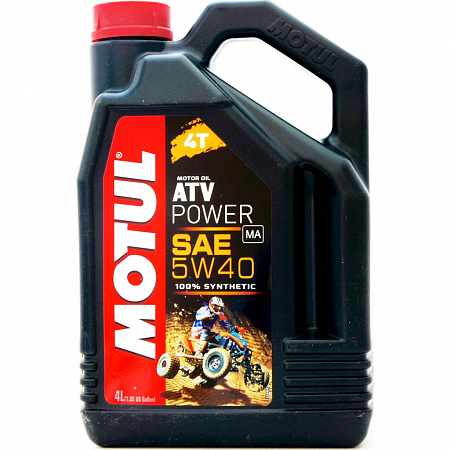 If you oil look dirty, it’s most likely time for an oil change!
If you oil look dirty, it’s most likely time for an oil change!
Approximately 8 hours of riding will require an oil change.
We hope this helped, please check out our other informative guides on how to properly maintain your vehicle.
In general, you’re supposed to perform an ATV oil change about every 100 hours of use, or at least once per year. But be sure to check your owner’s manual to find out what it says about your specific ATV.
How often should you change the oil on an UTV? There are some UTV enthusiasts who do not ride that often or use their UTVs for work purposes. if this is your case, then you do not need to change the oil as much. I would recommend changing the oil once every 60 hours of use, or once every 2 months.
Can you change oil in an ATV? Completing an ATV oil change regularly is important and should not be ignored. There is a little bit of a debate as to the time line for changing engine oil in an off-road vehicle and maybe some of that is carried on the shoulders of how you drive the machine or what type of oil you might use.
How much oil for an ATV? Here we are at the actual ATV oil change. As we mentioned before, look for the proper amount of oil for your machine in the service manual and most owner’s manuals actually have that basic information available. Most will be around 1.5qts – 2.5qts at most.
How often should I change the oil in my car? Fresh oil keeps your engine parts protected and lubricated and as a general rule should be done every five to 10 hours of riding but check the owner’s manual. Brands and models vary so ensure you’re following the manufacturer’s recommended oil change intervals.
Table of Contents
Your Engine Will Become Less Efficient The oil in your car also cleans the engine and prevents corrosion. You don’t need to change your oil right at 3,000 or 5,000 miles, but the longer you leave old oil in your engine, the poorer your engine’s performance will be.
about every 100 hours
around 20 years
Automotive oil will not work with the wet clutch. Atv oil is designed for this and to be used in transmission gears.
Many automakers have oil-change intervals at 7,500 or even 10,000 miles and 6 or 12 months for time. Even if you drive fewer miles each year than your automaker suggests changing the oil (say, 6,000 miles, with suggested oil-change intervals at 7,500 miles), you should still be getting that oil changed twice a year.4 Sept 2017
In a pinch, you may be tempted to run a 2-cycle engine by adding 4-cycle oil to the gas, but according to a lawn and garden equipment article published by the University of Tennessee Agricultural Extension Service, you should never mix 4-cycle oil with gasoline in a two-cycle engine, which would damage the engine and
Four-Cycle Motors They use the same oil as automobiles, but owners should check manuals because these small engines are sensitive to additives and alternatives. Typically, these engines use straight SAE 30 weight oil or multi-viscosity 10W-30 oil, both common auto engine oils.
Typically, these engines use straight SAE 30 weight oil or multi-viscosity 10W-30 oil, both common auto engine oils.
Mixing Ratio (Gas:Oil) Volume of Gasoline Volume of 2-Cycle Oil
———————- —————— ———————
40:1 1 US gal. (128 oz) 3.2 oz.
50:1 1 US gal. (128 oz) 2.6 oz.
32:1 1 liter 31.25 ml
40:1 1 liter 25 ml
Most auto manufacturers recommend oil changes once each year or 20,000km on petrol engines. Diesel engines and turbo charged petrol engines should be changed every 6 months or 10,000 km. Changing the oil once a year (20,000 km) is OK for vehicles driven in ideal circumstances.
If it was 200 hours of hillshootiing at the dunes, then that ATV has a lot of time spent at wide open throttle. If it is 200 hours of motocross racing or GNCC racing, then it also has a lot of wear and tear on it. If it is 200 hours of “usual use” then it isn’t too bad, but still depends on how it was maintained.
If it is 200 hours of “usual use” then it isn’t too bad, but still depends on how it was maintained.
No, 4 cycle oil is regular engine oil. Common engine oils used in lawn mowers are SAE30, 5W30 and 10W30.
Here we are at the actual ATV oil change. As we mentioned before, look for the proper amount of oil for your machine in the service manual and most owner’s manuals actually have that basic information available. Most will be around 1.5qts – 2.5qts at most.
Most auto manufacturers today recommend oil changes between 6,000 and 10,000 miles, but there are some manufacturers that go as high as 15,000 miles. Even if you are on the low end of the scale, you would still be changing your oil at least twice as often as necessary if you stick to the old 3,000 mile recommendation.
Traditional automotive motor oils are usually 10W-30 or 5W-20 viscosity; however, Polaris for instance, uses a 5W-50 viscosity for their off-road engines.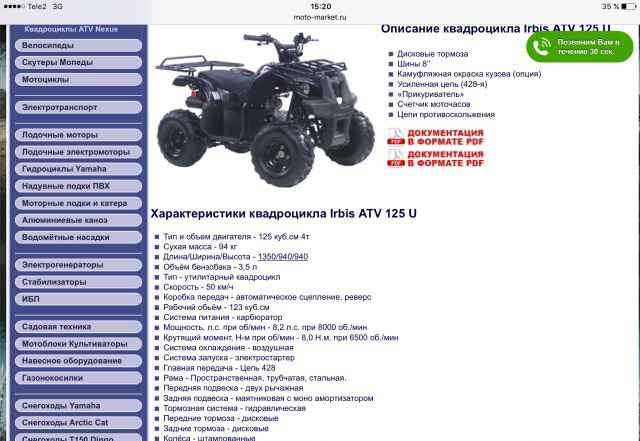
Every automobile engine needs oil, but not just any oil will do. It used to be normal to change the oil every 3,000 miles, but with modern lubricants most engines today have recommended oil change intervals of 5,000 to 7,500 miles.
Wrong! Your ATV or UTV requires motor oil just like any other motorized vehicle, but any oil just doesn’t cut it. These machines run at higher RPM, work harder and run harder than your truck does, so specialized oils are definitely called for.
10,000 miles
You should change your oil at least twice a year, regardless of how much driving you do. Why? Because oil is less effective over time. So, even though you’ve only put 5,000 km on your vehicle over six months, your oil still needs to be changed.
Content:
When using active types of equipment, do not forget about its maintenance, monitor the general condition of the ATV and change or top up technical fluids in time.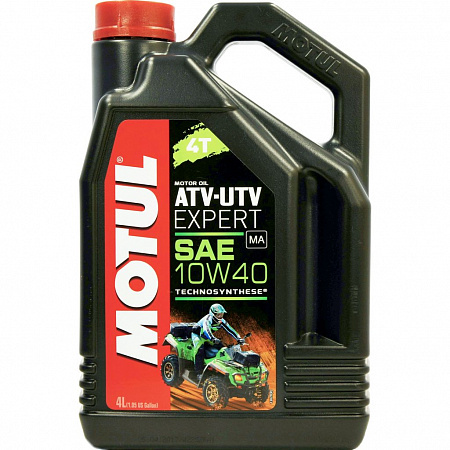 The service life of the equipment depends on this.
The service life of the equipment depends on this.
Using only original components and engine oils for ATV , recommended by the manufacturer of equipment, you can fully enjoy the "high" from owning such a machine, because it will not let you down, no matter what difficult situation you find yourself in.
Do not use regular automotive ATV engine oil. Consider the main reasons.
Characterized by dusty atmosphere, frequent idling and regular off-road driving.
Small crankcase volume, increased oil circulation and high thermal load on the engine due to its high thermal stress. Therefore, in real ATV operating conditions, only a special oil developed in accordance with the requirements of the motorcycle manufacturer, as well as taking into account the real operating conditions of ATVs, can reliably protect the engine.
So, CFMOTO G-Motion 4T 5W-40 and 10W-40 oils were developed by Gazpromneft-Lubricants specifically for CFMOTO ATVs. The CFMOTO G-Motion 4T 5W-40 and 10W-40 range are semi-synthetic ATV engine oils manufactured from synthetic and highly refined mineral base oils.
CFMOTO G-Motion engine oil for all-terrain vehicles.The main advantage of CFMOTO G-Motion 4T 5W-40 for the consumer is the ability to use the product in a wide range of operating temperatures: for example, the oil provides a cold start of the engine down to -30 0 C.
In turn, CFMOTO G-Motion 4T 10W-40 provides increased engine protection at very high loads by maintaining a stable oil film.
There are other features of these particular oils, showing that they have high performance characteristics, which have been repeatedly confirmed by oil tests in real conditions (see Presentation of test results).
Choosing ATV Engine Oil , by the way, do not forget about other ATV parts that need lubrication.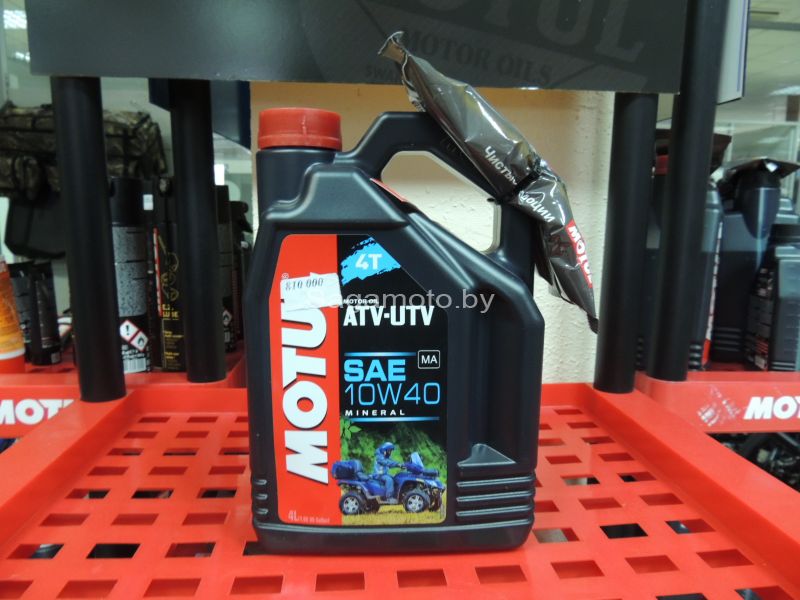
For example, gearboxes and transfer cases require gear oil, which is also worn out and needs to be changed regularly. It is necessary to check the oil every MOT (TOs are carried out according to the regulations described in the Service Book, which can be downloaded on the page of each ATV (see download files, for example, CFMOTO X8 Basic Restyle). As a rule, change the oil in the 1st MOT (the first 500 km ), and after - through maintenance, that is, 3000 km, 6000 km, etc.
CFMOTO recommends Gazpromneft GL-4 80W-90 gear oil.
ATV Gear OilIt is also necessary to regularly update the grease (suspension elements, cardan joints, etc.), which, over time, picks up dirt and is washed out with water. Therefore, we recommend using a waterproof multi-purpose grease based on the lithium-complex thickener Gazpromneft Grease LX EP 2.
multi-purpose lubricant Gazpromneft Grease LX EP 2. Brake fluid gradually takes water out of the air over time and begins to boil at lower and lower temperatures, which is not the best effect on your safety.
For CFMOTO ATVs of our own line, we recommend using the time-tested brake fluid G-Energy Expert DOT 4 , boiling point. As a rule, liquids of different classes are reversely replaceable (except for silicone brake fluids - they cannot be mixed with others), that is, you can use DOT-4 instead of DOT-3, but in no case vice versa. CFMOTO recommends using more state-of-the-art DOT-4 brake fluid to improve safety and extend the life of the brake system).
As you can see, antifreezes differ in color, but it is important to remember that the color of the antifreeze does not affect the technical characteristics. At the same time, it should be borne in mind that the “acidic” color of antifreeze only indicates that the composition contains a fluorescent additive that plays an important role in the diagnosis of the cooling system - coolant leaks are established (glow) when the engine compartment is illuminated with ultraviolet light.
Expert tip:
Therefore, the choice of antifreeze should not be guided by the rule "color to color".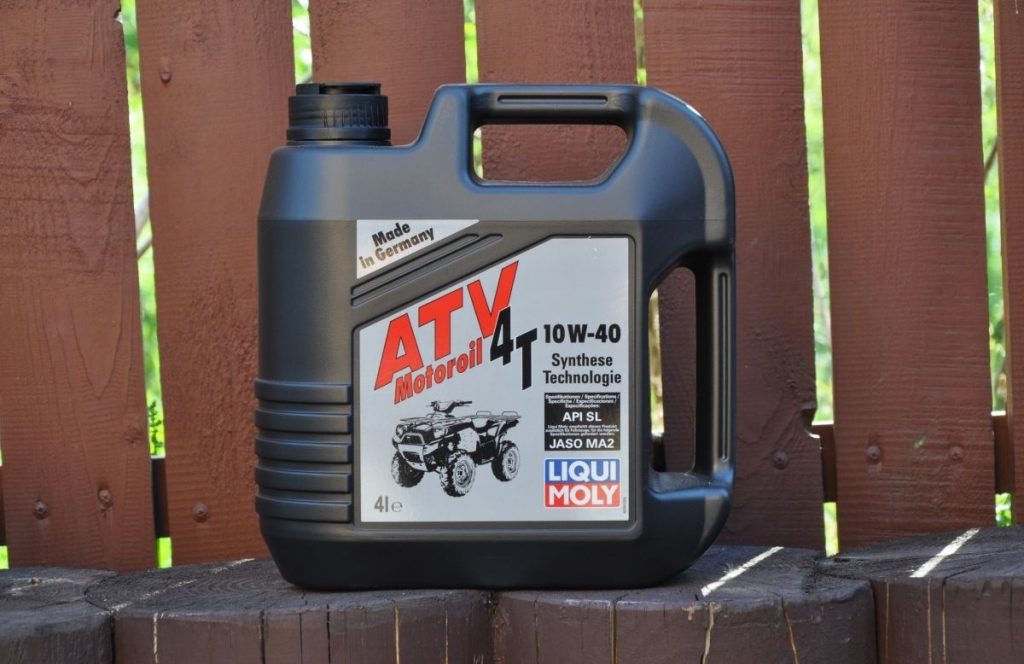 Coolants of the same color can have completely different compositions, which can lead to damage to the ATV.
Coolants of the same color can have completely different compositions, which can lead to damage to the ATV.
CFMOTO recommends using G-Energy Antifreeze NF 40 for engine cooling with ethylene glycol and hybrid technology additives.
It is necessary to lubricate the splines of the cardan shafts and universal joints after every 800 km , after pressure washing or immersion in water, before storage. Use only special grease for cardan joints.
You can find CFMOTO G-Motion oils, technical fluids and lubricants for ATVs at any CFMOTO dealer center in Russia.
CFMOTO G-Motion Oils: Take it and ride!
The popularity of ATVs has led to a wide range of models - from simple models with minimal equipment to powerful multi-axle options for purely utilitarian purposes. A separate article is sports ATVs, which are distinguished not only by highly accelerated motors with the utmost lightening of the structure, but also by the use of mechanical gearboxes instead of the usual variator.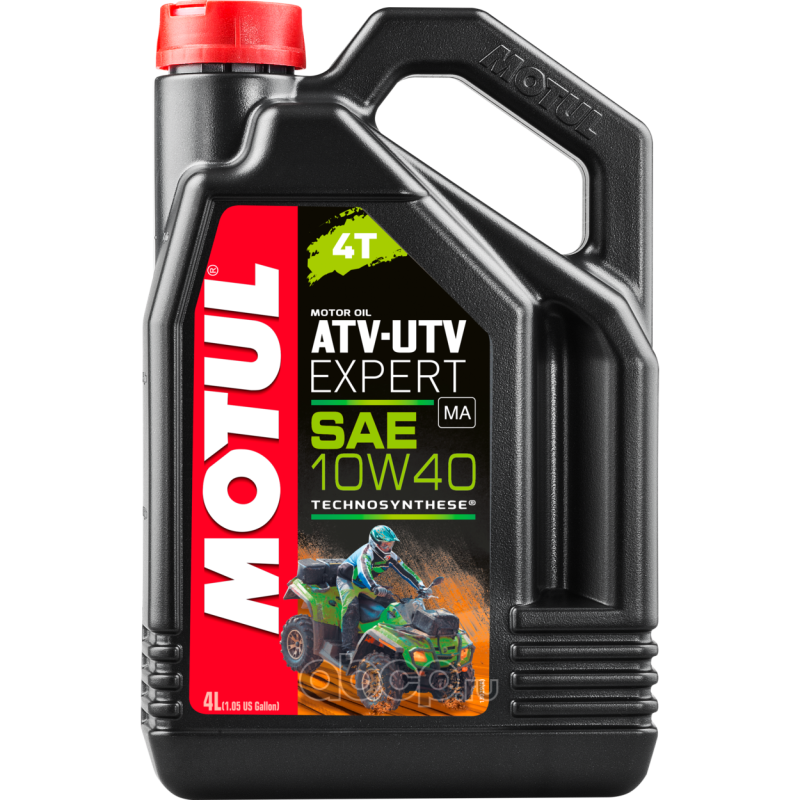 Such a technique can be both a great way to get adrenaline and help a hunter or farmer.
Such a technique can be both a great way to get adrenaline and help a hunter or farmer.
Proper selection of ATV engine oil will allow you to get the maximum resource out of it. This is especially important during tough operation - transporting heavy loads, overcoming fords, etc. Even on a prepared ATV with snorkels installed, there is a high risk of water entering the crankcase, which means that the protective properties of the oil must be at a high level. In any case, if an emulsion is found on the dipstick or in the oil tank (on ATVs with a dry sump), the oil must be changed immediately. Will require inspection and gearbox.
For most models of four-wheel vehicles, ROLF Lubricants GmbH can offer oils of decent quality and attractive prices with reliable counterfeit protection.
Engine oil for ATVs must first of all match the type of engine. The vast majority of existing models are equipped with one- or two-cylinder water-cooled gasoline engines, that is, they require oils of the API S group.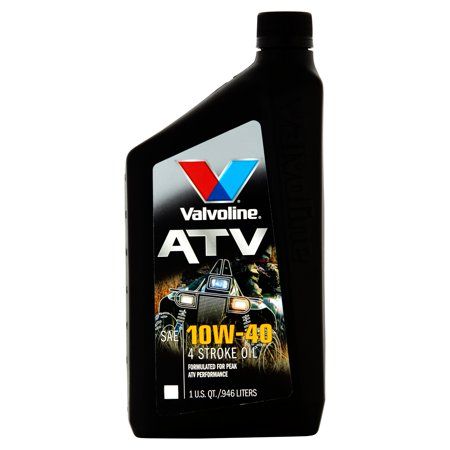 A small number of ATVs produced in the most basic configuration continue to use 2T engines - they are simpler, cheaper and lighter. In this case, only special two-stroke oils of API TC quality class can be used.
A small number of ATVs produced in the most basic configuration continue to use 2T engines - they are simpler, cheaper and lighter. In this case, only special two-stroke oils of API TC quality class can be used.
Diesel engines are also installed on heavy utility ATVs, including the Side-by-side class. For them, it is worth choosing a specialized oil for diesel engines (API C class group), but filling with universal motor oils is also possible, since their characteristics are suitable for diesel engines used on utility ATVs.
The oil change interval is determined by the manufacturer and is given in the service book. It is recommended to change the oil at the beginning of the season if the ATV is not being driven in the winter, even if it has had little mileage the previous year.

Therefore, the use of ROLF automotive engine oils on such ATVs is more than justified. For example, the instruction manual for BRP Outlander ATVs explicitly states that the original engine oil can be replaced with any SAE 5W-40 automotive oil with a quality class of at least API SG. With such low requirements, any ROLF 5W-40 oil will work perfectly in this technique.
You can do the same when buying a diesel ATV. For example, for Polaris Ranger Diesel, the instructions require the use of original Polaris Diesel Oil (SAE 15W-40) engine oil or diesel oils of the appropriate viscosity.
There are only two cases where motor oil must not be poured into an ATV engine. First of all, we are talking about sports models equipped with a “wet” clutch and a manual gearbox in a common lubrication circuit with a motor. They need specialized, synthetic four-stroke oils designed specifically for these operating conditions.
Two-stroke ATVs also need their own type of lubricant. Of the entire range of two-stroke oils, it is precisely those that are designed for motor vehicles, taking into account its inherent operating temperatures and loads, that are optimal.
Of the entire range of two-stroke oils, it is precisely those that are designed for motor vehicles, taking into account its inherent operating temperatures and loads, that are optimal.
This oil is designed as a universal oil for motor vehicles with medium and large displacement of cylinders. It is compatible with all types of lubrication systems, can work in a gasoline-oil mixture, in separate lubrication of carburetor engines and on two-stroke engines with electronic fuel injection.
ROLF MOTO 2T ATV Engine Oil
ROLF Moto 2T meets stringent current requirements for two-stroke oils for protection against wear, smoke and carbon deposits. It maintains the performance of the spark plug for a long time, preventing contamination of the electrodes by unburned oil residues. Thanks to anti-wear additives, the engine remains protected from scuffing on the piston and cylinder walls at high temperatures.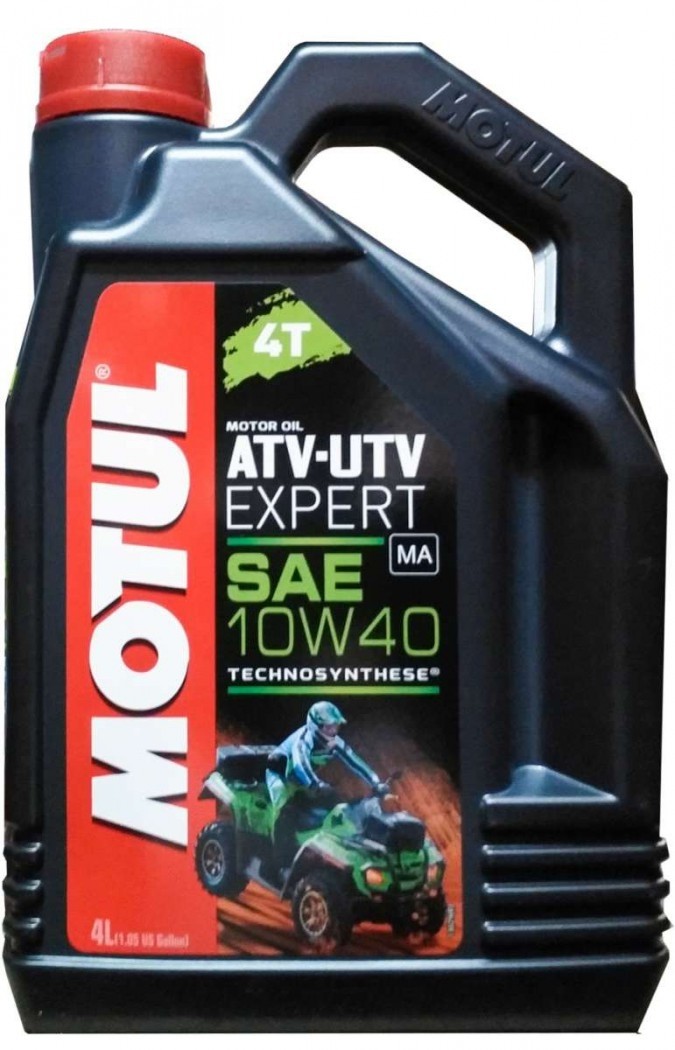
| Density at 15°C, kg/m 3 | 876.8 |
| Kinematic viscosity at 100 °С, mm 2 /s | 10.76 |
| Kinematic viscosity at 40 °C, mm 2 /s | 81.36 |
| Viscosity index | 118 |
| Open cup flash point, °С | 158 |
| Pour point, °С | -42 |
| Quality classes | JASO FD/ISO-L-EGD, JASO FB/API TC |
| Approvals | Rotax 253, Piaggio Hexagon |
Four-stroke ATV engines with CVT transmissions are subject to the same standardization systems as for automobiles. That is, the main quality classification is the generally used API standard, and due to the less stringent environmental requirements for ATVs, obsolete classes like API SJ are still used today.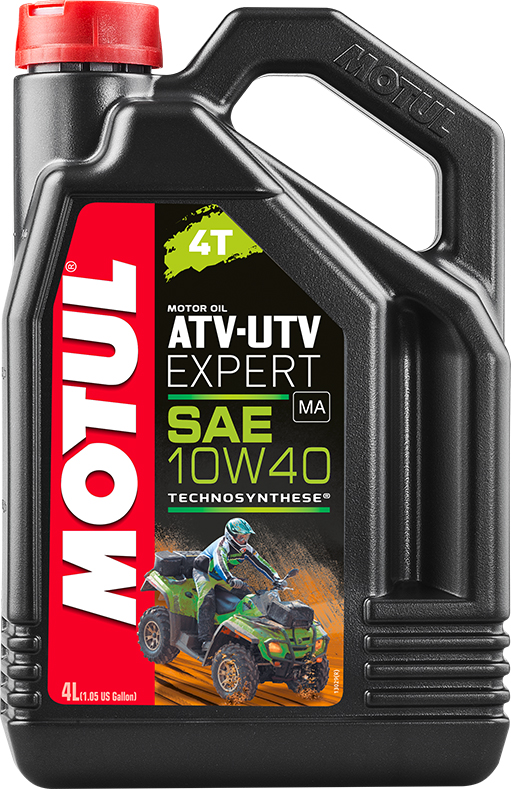
The viscosity of oils is also marked according to the SAE standard used for automotive oils. Since ATVs are often used not only in summer, but also in the off-season, and sometimes in winter, the best choice for them is all-weather oils, which is also confirmed by the above excerpts from the requirements of the instructions.
For wet clutch ATVs, the engine oil must also meet JASO MA2 quality class. It takes into account the specific requirements of such motors for the anti-friction properties of oils. In the ROLF product line, ROLF GT 5W-40 SN/CF has this approval.
Two-stroke oils are standardized according to a separate group of API classes, of which API TC is currently relevant. But it is optimal to choose an oil produced taking into account additional JASO / ISO specifications with a group of at least C (that is, JASO FC, ISO-L-EGC). Compared to API TC oils, they protect the engine better, smoke less during combustion, and form less carbon deposits.
Since the gearbox on ATVs either requires no lubrication at all (dry CVT) or the manual transmission is lubricated directly with engine oil, only the gearboxes require their own lubrication.